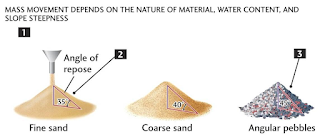Overview on dissolution for dosage form design
Dissolution is the process by which a solid substance dissolves in a liquid solvent to form a solution. In the context of dosage form design, dissolution refers to the release of a drug from its solid dosage form, such as a tablet or capsule, into the surrounding aqueous environment of the gastrointestinal tract.
Why is dissolution important in dosage form design?
Dissolution is important in dosage form design because it determines the rate at which a drug is released and becomes available for absorption. A drug that is released too slowly may not achieve the desired therapeutic effect, while a drug that is released too quickly may cause adverse effects or toxicity. The goal of dosage form design is to optimize dissolution to achieve the desired therapeutic effect with minimal risk of adverse effects.
Factors affecting dissolution
Several factors can affect dissolution in dosage form design, including:
Physicochemical properties of the drug: The solubility and permeability of the drug can impact dissolution. A drug that is poorly soluble may dissolve slowly, while a drug that is highly soluble may dissolve quickly but may not be absorbed efficiently.
Dosage form design: The design of the dosage form can also impact dissolution. Factors such as particle size, surface area, and formulation can all affect the rate of dissolution.
pH of the surrounding environment: The pH of the surrounding environment can impact dissolution, particularly for drugs that are weak acids or bases.
Mechanical factors: Mechanical factors such as agitation and compression force can impact dissolution by affecting the surface area and particle size of the drug.
Measuring dissolution
Measuring dissolution is an important step in dosage form design. The most common method for measuring dissolution is the USP dissolution test, which involves placing the dosage form in a dissolution apparatus and measuring the amount of drug that dissolves over time. The results of the dissolution test can be used to optimize dosage form design and ensure that the drug is released at the desired rate.
In conclusion, dissolution is a critical factor in dosage form design, as it determines the rate at which a drug is released and becomes available for absorption. Factors such as physicochemical properties of the drug, dosage form design, pH of the surrounding environment, and mechanical factors can all impact dissolution. Measuring dissolution is an important step in dosage form design to optimize drug release and achieve the desired therapeutic effect with minimal risk of adverse effects.




Comments
Post a Comment